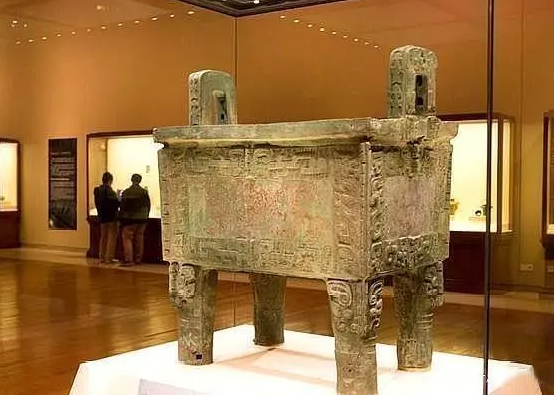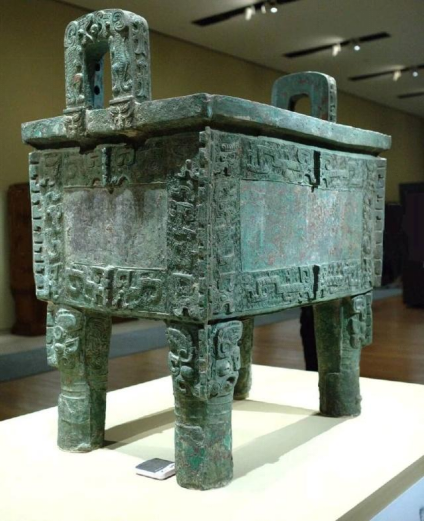"Simu Wuding" or "Stepmother Wuding"?
Specializing in the production and processing of various types of Chinese bronze tripods, it can be customized for various types of tripods, four-legged copper tripods, imitation bronze tripods, etc. Wholesale orders are welcome.
Chinese bronzes are famous all over the world. They not only have many varieties, exquisite shapes, but also imaginative shapes. Typical examples include the bronzes unearthed in Sanxingdui, Sichuan, the bronze chariots and horses unearthed from the Terracotta Warriors of Qin Shihuang, and the beautiful bronzes collected by the Baoji Bronze Museum in Shaanxi. Among the numerous bronze wares, two are regarded as "Treasures of the State": they are the Mao Gong Ding located in the National Palace Museum in Taipei and the "Houmu Wu Ding" located in the National Museum of China. Mao Gongding won the most with inscriptions, while the latter dominated by size and weight. However, the name of this Baoding was always called Simuwu Dafangding in history textbooks. It is said that Guo Moruo recognized "hou" as "si", which led to Baoding's name is wrong, so is it really so?

In the early spring of 1939, two brothers from Wuguan Village, Anyang, Henan, took Luoyang shovels in the fields to "Taobao". One night they suddenly detected something hard in the ground, so the two brothers decided to dig up the soil to see what the treasure was. The black wind was high, and the weather was cold and the ground was freezing, so the two of them didn't fully dig out until dawn. The next day, they called more than 40 villagers, and after digging for three nights, they finally lifted up a patina-stained behemoth from the soil. Shen, this is the Houmuwu Ding, a national treasure of bronze wares that shocked later generations. The tripod weighs 832.84 kg, is 133 cm high, has a mouth length of 110 cm, a width of 79 cm, a foot height of 46 cm, and a wall thickness of 6 cm. It is the largest tripod unearthed in the world so far. The heaviest bronze. At that time, it was the period when Japan invaded China. In order to prevent Baoding from falling into the hands of the Japanese, the local villagers also fought with the Japanese, and even bought a fake bronze ware and buried it in their own courtyard to deceive the puppet army and Japan. People searched, and finally kept this precious national treasure.
After the victory of the Anti-Japanese War, Dading was exhibited for the first time in the capital Nanjing, which caused a sensation in the entire Nanjing city. When the Kuomintang retreated to Taiwan in 1949, the original intention was to transport the big ding to Taiwan, but because the big ding was too heavy, the big ding was left at the Nanjing Airport, and was later discovered by the People's Liberation Army and transferred to the Nanjing Museum. In 1959, the Chinese History Museum was completed, and the stepmother Wuding was transferred from Nanjing to Beijing, becoming the treasure of the town hall. Mr. Guo Moruo originally named the tripod and called it the Simuwu Ding. He believed that "Simuwu" means "sacrificing mother Wu". Another famous scholar, Luo Zhenyu, once thought: "Shang is called Nian, and it is also called Siye, and Si is the word for ancestral temple." Therefore, this name has been used all the time. After reading the history textbook, Anyang, Henan, as Baoding's hometown, also placed a replica in the Yinxu Museum, with the three characters "Simuwu" written below it.

However, many scholars have proposed that the word "si" should be interpreted as the word "hou", because in ancient writing, the word "si" and "hou" are the same word, while the ancient "hou" refers exclusively to the queen, and the "hou" before and after refers to the current The abolished "hou", so the "hou" of "houmuwu" is synonymous with the "hou" in the "huangtianhoutu", and its meaning is equivalent to "great, great, respected", the naming of "houmuwu" should be Better than "Simuwu". The academic controversy is understandable, but this has brought trouble to Baoding's publicity and education. The reference book "Ci Hai" published thereafter described the "Simuwu Ding" as follows: a bronze ware in the late Shang Dynasty, the belly of a tripod. There are three characters in the inscription "Simuwu" (or "Houmuwu").
However, in the National Museum of China, Yinxu Museum, and Chinese Character Museum, when the same bronze ding ding (the Yinxu and Character Museum are replicas) were displayed, different names appeared.
At the end of March 2011, the new National Museum of China opened, and Baoding was officially moved from the Chinese History Museum to the museum. After being "stepmother Wu", it caused an uproar in the society, and the dispute between "si" and "hou" also expanded from academia to social debate. The name of the Baoding in the Yinxu Museum where it was unearthed is still "Simuwuding". In the Museum of Chinese Characters, its name is still "Simuwu Ding".
To sum up, Guo Moruo did not recognize the typo. In ancient writing, Si and Hou are the same word, but the different understandings lead to different names. "Simuwu" can be understood as "sacrificing to mother Wu", while "houmuwu" means "si Muwu". The explanation is "Dear Mother E".









